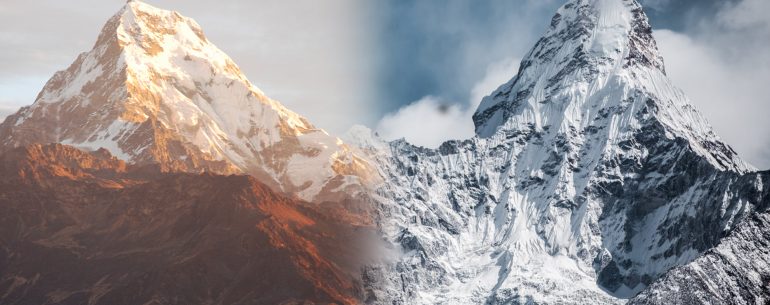Move over, Everest. Scientists say that by one measure, the world’s highest peak is actually Mount Chimborazo in Ecuador.
The summit of Chimborazo, an inactive volcano in the Andes, rises about 20,500 feet above sea level, far short of Everest’s renowned 29,029 feet. But it’s a different story when you measure from the center of Earth: Chimborazo’s apex rises the farthest, at about 21 million feet or 3,967 miles, while Everest’s doesn’t even crack the top 20.
This is because, while Earth is not flat, it is also not a perfect sphere. The planet flattens at its poles and bulges slightly around its waistline — don’t we all? — making its radius about 13 miles greater at the Equator. Chimborazo is close to the Equator, but Everest is 28 degrees’ north latitude, nearly one-third of the way to the pole.
Mount Chimborazo has been anthropomorphized as a man in a stormy relationship with a shorter and more active female companion, the Tungurahua volcano, which is known to belch ash that lands on Chimborazo’s icy slopes. Josefina Vasquez, an archaeologist at the Universidad San Francisco in Quito, said that Chimborazo “has been venerated since pre-Colombian times” and is “still a sacred mountain where it’s thought to be close to God.”

On a recent climb to commemorate the 280th anniversary of a 1736 mission by the adventurer Charles Marie de La Condamine, a research team lead by the Institute de Recherche pour le Development in France found that Chimborazo was about 15 feet shorter than previously thought, but reaffirmed its status as the highest from the Earth’s center.
So why does Everest get all the glory? It’s all about the climb.
Scaling Everest typically requires a 10-day trek to base camp, six weeks of acclimatizing, and a seven- to nine-day trip to the top. Climbing Chimborazo can be done in about two weeks, with a one- or two-day hike after acclimatization, according to Todd Burleson, president of Alpine Ascents International, a mountaineering company based in Seattle.
“Don’t get me wrong, I wouldn’t belittle the mountain,” he said. “It’s an excellent training ground for big mountains.”
Source: New York Times


Leave a Reply